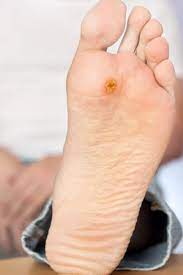Warts are a common dermatological condition that can affect individuals of all ages. Their occurrence is influenced by various factors, including environmental exposure and individual susceptibility. Understanding the underlying causes and mechanisms of wart formation is key to effective prevention and treatment strategies. Let’s look at what warts are, the contributing factors, and when one should see a dermatologist.
What Are Warts?
Warts are small, non-cancerous growths that appear on the skin when a specific group of viruses, known as the human papillomavirus (HPV), infect the skin. These growths can vary in texture, size, and shape but are typically rough to the touch. Warts commonly develop on areas such as the hands, feet, and knees, though they can appear anywhere on the body. There are several types of warts, including common warts, plantar warts, flat warts, and filiform warts. Each type has specific characteristics, but all are caused by HPV.
Warts are not only a cosmetic concern but can sometimes cause discomfort, especially when they form in weight-bearing areas like the soles of the feet. Although they may resolve on their own over time, warts can be persistent and require treatment in some cases.
What Causes Warts?
Warts are caused by specific strains of HPV. The virus enters the skin through small breaks, such as cuts, scratches, or cracks. Once inside, the virus stimulates rapid growth of skin cells in the infected area, leading to the formation of a wart. While some individuals are more prone to warts due to a weakened immune system, anyone can develop them if exposed to HPV.
HPV is highly contagious and spreads through direct skin-to-skin contact. It can also spread indirectly through shared personal items, such as towels or razors, or contaminated surfaces like gym floors and public showers. This transmission risk underscores the need to practice thorough hygiene and caution in communal areas.
How Can One Prevent Warts?
Preventing warts requires limiting exposure to HPV and maintaining healthy habits. The following measures can reduce the risk of developing warts or spreading them to others:
- Avoid skin contact with existing warts, whether on yourself or others.
- Use protective footwear, like flip-flops, in communal areas such as public showers or swimming pools to prevent contact with contaminated surfaces.
- Make sure to avoid sharing personal items, including towels, razors, and nail clippers, as these can carry the virus.
- Keep skin clean and moisturized to reduce the likelihood of cracks or injuries that allow HPV to enter.
- Cover existing warts with bandages to minimize the spread of the virus to other parts of the body or individuals.
- Consult with your dermatologist about the vaccine.
Building these preventive practices into your routine can be a helpful way to reduce the risk of encountering HPV and developing warts.
When Should One See a Dermatologist?
While warts are often harmless and may disappear without treatment, some situations require professional evaluation. A dermatologist can assess the wart and recommend appropriate interventions if it meets any of the following conditions:
- The wart causes pain, discomfort, or bleeding.
- There is uncertainty about whether the growth is a wart or another skin condition.
- The wart grows, spreads, or recurs despite at-home treatments.
- You have a compromised immune system, which could make warts more challenging to manage.
Dermatologists use advanced techniques such as cryotherapy, laser treatments, or prescription medications to address persistent or bothersome warts. Seeking timely consultation makes it possible to address the condition effectively and avoid unnecessary complications.
Need to See a Dermatologist?
Warts are a common skin condition caused by HPV and can spread through direct contact or shared surfaces. While basic preventive steps can limit your risk, persistent or problematic warts may require professional care. Consulting a dermatologist guarantees an effective diagnosis and treatment tailored to your needs.
- How To Improve Gut Health – Boost Digestion, Energy & Immunity!
- Is Coffee Beneficial To Health – Expert Insights You Can’t Afford To Miss!
- TimesHealthMage Diet Plans For Diabetics – Manage Blood Sugar The Smart Way!
- Which Type Of Exercise Is Best For Improving Cardiorespiratory Fitness – Expert Advice!
- Fitness Ryldoria Vornik – A New Way To Feel Strong!


Leave a Reply